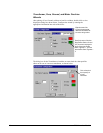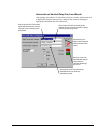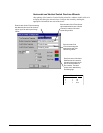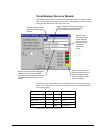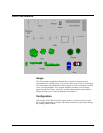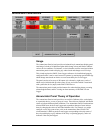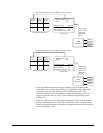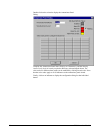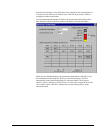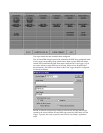
26 PMCS Interface Toolkit
From the Event Logger’s perspective, there are two parts to configuring the
Annunciator Panel. First, each DDE Item that will be displayed on the Annunciator
Panel wizard must be added (using the Add Items dialog). For the example we’re
discussing, we’ll assume you’ve created a DDE Item named Trip1. Each DDE item
will connect to an individual tile in the Annunciator Panel wizard.
The second part consists of defining events which will turn individual DDE items ON
or OFF. Each DDE item (or Annunciator Panel tile) can be turned on or off by any
number of device events you define. The events are logically ORed together to
determine ON or OFF conditions; i.e., if any of the events occurs, the DDE item is
ON; if none of the events have occurred, the DDE item remains OFF.
We’ll continue the relay example we began above. For example, you might configure
the Trip1 DDE Item to be ON if any of the following events occurs: the relay is
tripped, or the relay reports an error condition, or the relay senses an overvoltage
condition. The Annunciator Panel wizard displays a grey indicator tile for the relay
for as long as the DDE item remains in the OFF condition. If the Annunciator Panel
wizard sees the DDE Item change from OFF to ON, it reacts by changing the
indicator tile from grey to red. The Event Logger Annunciator Panel logic will also
change the state of a DDE Item in response to actions performed at the Annunciator
Panel Wizard. The user can both acknowledge and reset individual Annunciator DDE
Items. The following diagram shows the relationship of the Annunciator Panel
wizard, the Event Logger, and the PMCS DDE Server.



